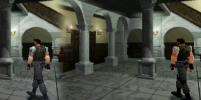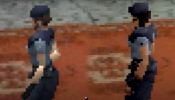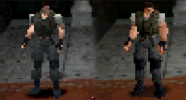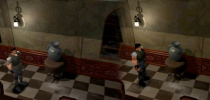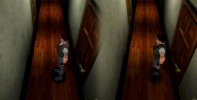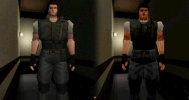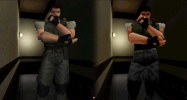Arcade hardware is low volume, where development costs are a big part of the budget, while console hardware is high volume and production costs are more important. Once you factor in the cost of cabinet design and shipping, throwing in some extra RAM isn't a big deal, it helps reduce development costs, and the improvement to textures helps attract players.Speaking of the Naomi having twice the RAM... I've seen this in a couple of instances where the arcade variant of hardware has more memory than the home version (i.e. Namco System 11 has 2MB VRAM to the Playstation's 1MB). Is there a specific reason for beefing up the arcade memory, or does it just make development easier on the get-go. Are there examples of Naomi games that have better textures/assets over the Dreamcast conversion?
Several Naomi games have noticeably higher resolution textures. It's really noticeable on Crazy Taxi, where the environment texture are all half width/height on the DC compare to Naomi. I remember looking at screenshots of DC Crazy Taxi back in the day, and thinking about how low res the textures were.
On DOA2, some textures are better, but it's not as noticeable. What is noticeable are the cross dissolves between some camera cuts. On the Naomi a full 640x480 copy of the previous cut is used, while the DC version uses a bilinear filtered 320x240 copy.

